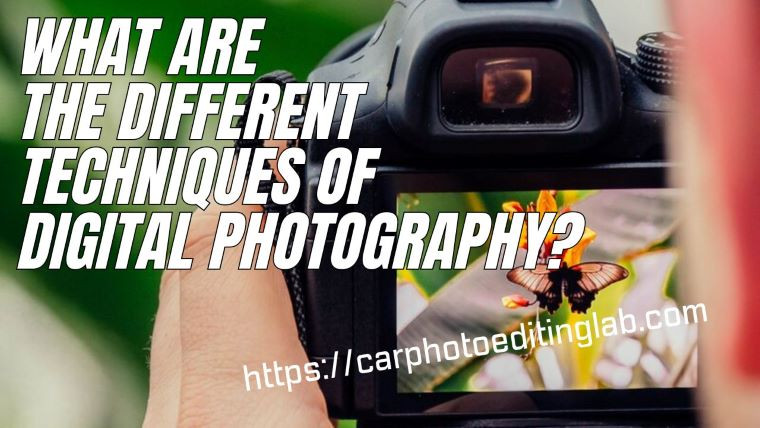-
Contact us with Whatsapp:
+8801734997063 -
Mail Us:
[email protected] -
Service Hours
24/7
What are the different techniques of Digital Photography?

May 2024
- 06 May 2024
- Business Solution
- 0 Views
What are the different techniques of Digital Photography?
In the realm of visual storytelling, digital photography stands as a dynamic medium that continues to evolve with technological advancements. With the rise of digital cameras and smartphone photography, capturing moments has become more accessible to everyone. However, mastering the art of digital photography goes beyond just pointing and shooting. It involves understanding various techniques to harness creativity and convey emotions effectively. In this article, we'll delve into the diverse techniques of digital photography that empower photographers to transform ordinary scenes into extraordinary works of art.
1. Composition: Composition is the foundation of photography. It involves arranging elements within the frame to create visually compelling images. Techniques such as the rule of thirds, leading lines, symmetry, and framing help photographers achieve balance and visual interest in their photos. Experimenting with different compositions allows photographers to tell stories and evoke emotions through their images.
2. Lighting: Light plays a crucial role in photography, influencing mood, tone, and texture. Understanding how to manipulate light enables photographers to capture stunning images in various conditions. Techniques such as natural light photography, studio lighting setups, and using reflectors or diffusers help control the intensity, direction, and quality of light. Mastering lighting techniques empowers photographers to create dramatic portraits, vibrant landscapes, and captivating still lifes.
3. Exposure: Exposure refers to the amount of light that reaches the camera sensor, determining the brightness or darkness of an image. Achieving proper exposure involves balancing three key elements: aperture, shutter speed, and ISO sensitivity. Techniques such as manual exposure control, exposure compensation, and bracketing allow photographers to adjust settings according to the desired outcome. Understanding exposure empowers photographers to capture well-exposed images in various lighting conditions.
4. Depth of Field: Depth of field refers to the range of distance in a scene that appears acceptably sharp in an image. Controlling depth of field allows photographers to emphasize the subject while blurring the background or achieve maximum sharpness throughout the frame. Techniques such as adjusting aperture settings, using selective focus, and employing techniques like bokeh or hyperfocal distance help manipulate depth of field to create visually engaging images.
5. Composition: Composition is the arrangement of visual elements within the frame to create a balanced and aesthetically pleasing image. Techniques such as the rule of thirds, leading lines, framing, and symmetry help guide the viewer's eye and convey the photographer's intended message. Experimenting with different compositions allows photographers to explore creative possibilities and enhance storytelling in their images.
6. Perspective and Angle: Changing perspective and angle can transform the way a subject is perceived in a photograph. Techniques such as shooting from low or high angles, using different focal lengths, and experimenting with unconventional viewpoints add depth and visual interest to images. By exploring various perspectives, photographers can capture unique and compelling compositions that stand out from the ordinary.
7. Color Theory: Understanding color theory enables photographers to create harmonious and impactful images. Techniques such as color contrast, color harmony, and color psychology help photographers evoke emotions and set the mood in their photos. Whether it's vibrant and saturated hues or muted and desaturated tones, mastering color theory empowers photographers to convey their artistic vision effectively.
8. Post-Processing: Post-processing is the process of enhancing and refining images using editing software such as Adobe Photoshop or Lightroom. Techniques such as adjusting exposure, contrast, color balance, and applying creative filters allow photographers to fine-tune their images and unleash their creativity. Post-processing also offers opportunities for experimentation and artistic expression, enabling photographers to elevate their work to new heights.
9. Long Exposure: Long exposure photography involves using a slow shutter speed to capture motion over an extended period. Techniques such as using neutral density filters, tripod stabilization, and controlling ambient light help photographers create mesmerizing effects such as silky waterfalls, light trails, and starry skies. Long exposure photography adds a sense of dynamism and surrealism to images, allowing photographers to capture the passage of time in a single frame.
10. HDR Photography: High Dynamic Range (HDR) photography involves capturing multiple exposures of the same scene at different exposure levels and blending them together to retain detail in both highlights and shadows. Techniques such as bracketing, tone mapping, and HDR software enable photographers to create stunning images with enhanced dynamic range and tonal richness. HDR photography is particularly useful in challenging lighting conditions where the dynamic range exceeds the capabilities of the camera sensor.
In conclusion, digital photography offers a vast array of techniques for photographers to explore and experiment with. From mastering composition and lighting to controlling exposure and manipulating depth of field, each technique plays a crucial role in shaping the visual narrative of an image. By understanding and applying these techniques creatively, photographers can unlock their full potential and capture captivating moments that resonate with viewers. Whether you're a beginner or a seasoned professional, embracing diversity in digital photography techniques opens doors to endless possibilities for artistic expression and storytelling.
Top of Form
























0 Comment